Gigabyte GTX 780 GHz Edition 3GB Graphics Card Review
Ryan Martin / 10 years ago
Introduction
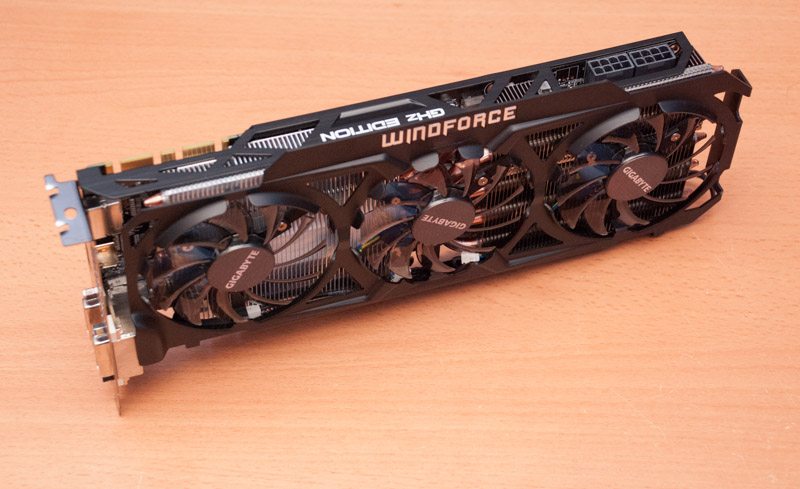
With AMD’s R9 290 coming in at a price point of $399 Nvidia’s GTX 780 has been put under pressure at its $499 price point since the R9 290 more or less beats it for 100 dollars less. Nvidia was already on the defensive from the release of the R9 290X, forced to drop the price of its GTX 780 down from $649 to $499, but with the release of the R9 290 at a much lower price than expected the GTX 780 is surely due another price cut? Well Gigabyte aren’t hanging around for that to happen and they are instead doing something a bit different by making a GTX 780 “GHz Edition”. Yes you heard that right, a GHz Edition – that notorious AMD phrase which AMD used on the HD 7970 GHz Edition and HD 7870 GHz Edition. Gigabyte’s interpretation of a GTX 780 “GHz Edition” is taking the GTX 780 GPU and overclocking it from the stock 863MHz on the core and 900MHz on the boost, to 1020MHz on the core and 1072MHz on the boost. That’s a whopping 19% overclock compared to a stock GTX 780!
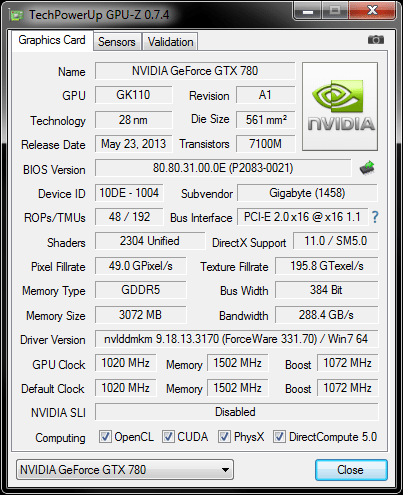
What else they’ve done with it isn’t that dissimilar from their GTX 780 WindForce OC we reviewed only a few weeks ago. They’ve slapped on their same impressive performing triple fan WindForce 3X cooling solution and to give it something a little bit special they’ve also put a rather suave looking backplate on. Of course Gigabyte’s modifications mean the price is going to go up a little, but only 10%, and that’s in return for a guaranteed 20% overclock, custom cooler and a backplate – sounds like a good deal to me!
Our particular sample came straight from Gigabyte HQ in Taiwan so it is nothing but a plain Gigabyte press box.
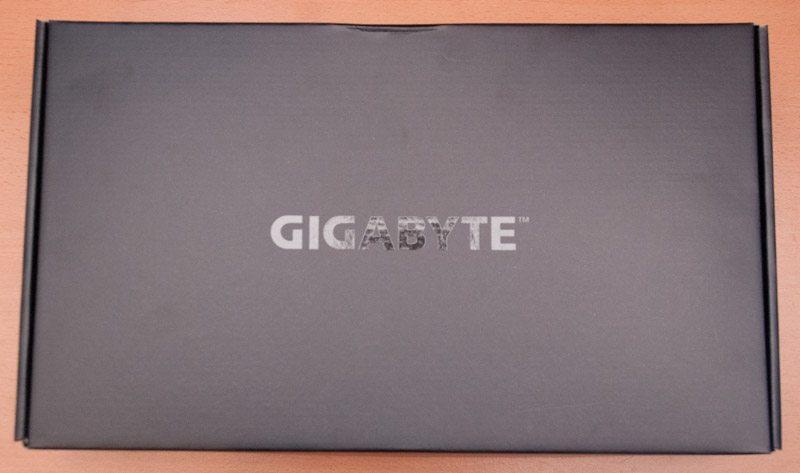
Inside we find the graphics card and absolutely nothing else. Of course the final retail version will be bundled with the usual accessories and the three games involved in the current GTX Bundle promotion which the GTX 780 is eligible for if bought at participating retailers (Assassin’s Creed 4 Black Flag, Splinter Cell Blacklist and Batman Arkham Origins).
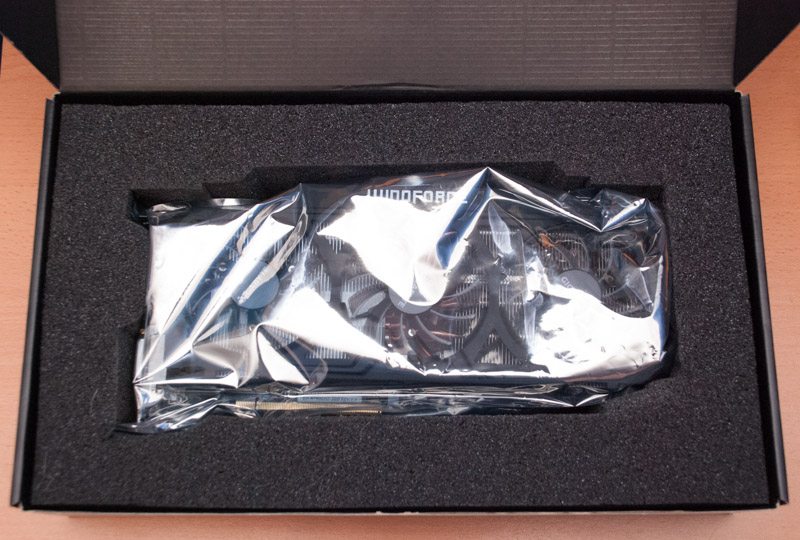
A Closer Look
Like the GTX 780 WindForce OC the GHz Edition from Gigabyte uses the same excellent WindForce 3X cooling solution. This entails three 80mm fans ventilation a rather large aluminium heatsink with five 6mm heatpipes feeding out from the GPU die.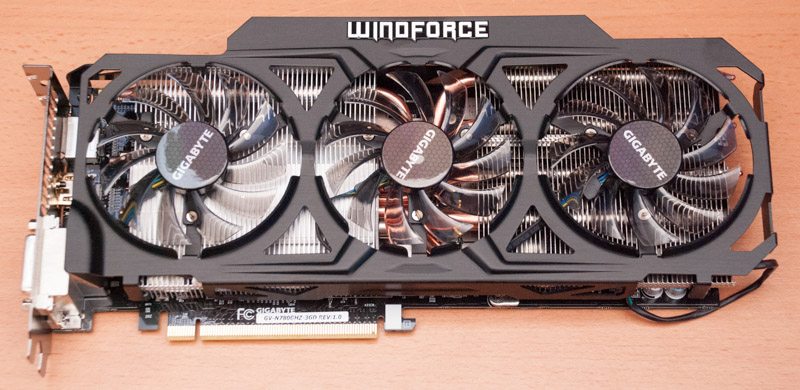
The back has a lovely looking backplate with some “GHz Edition” branding on it. There’s also a touch of Gigabyte branding and we can also see they’ve been kind enough to lavish on a black PCB which is great as it matches everything else on the card.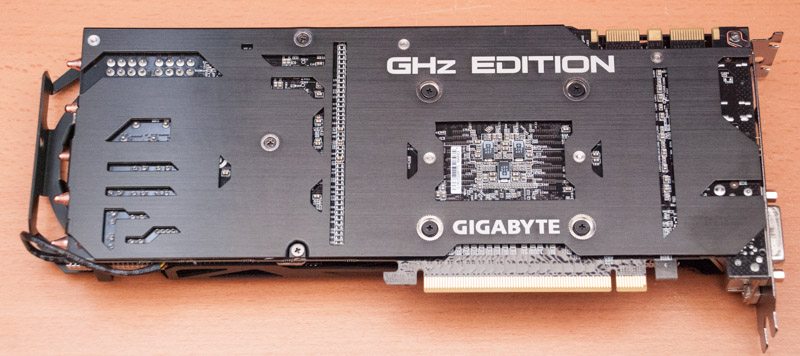
At the end of the graphics card you can see those five 6mm heatpipes poking through.
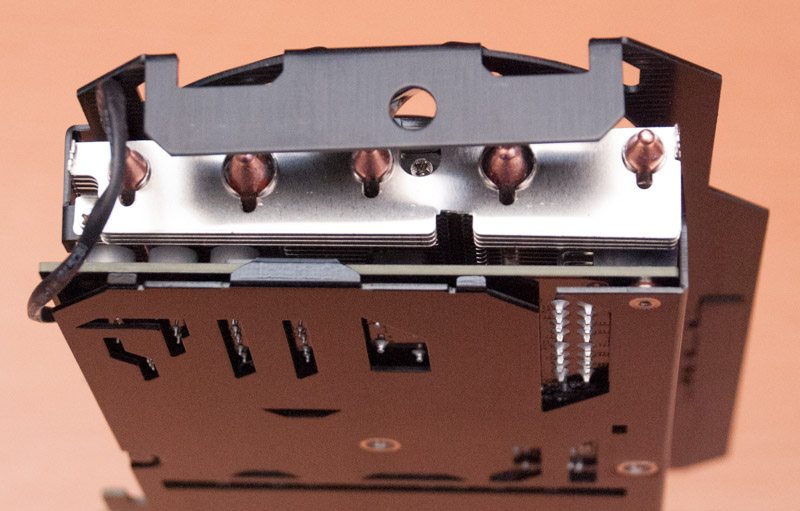
In total the Gigabyte GTX 780 GHz Edition is about 29cm long, which is 11.4 inches. The card is a dual slot spacing as well, though it does overhang by a few millimetres on either side.

Given the hefty overclock a pair of 8 pin PCIe connectors are need to deliver this beast the power it needs.
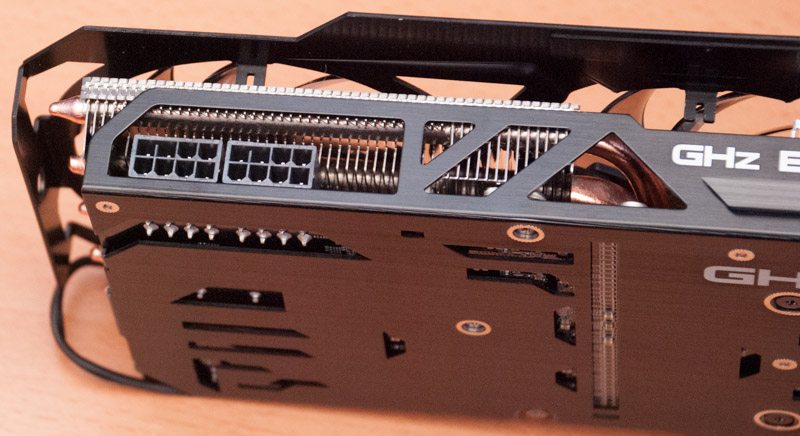
Two SLI fingers are present for up to 3 Way SLI, or 4 way SLI if you do some “ghetto” driver modding but officially it’s only up to 3 Way SLI.
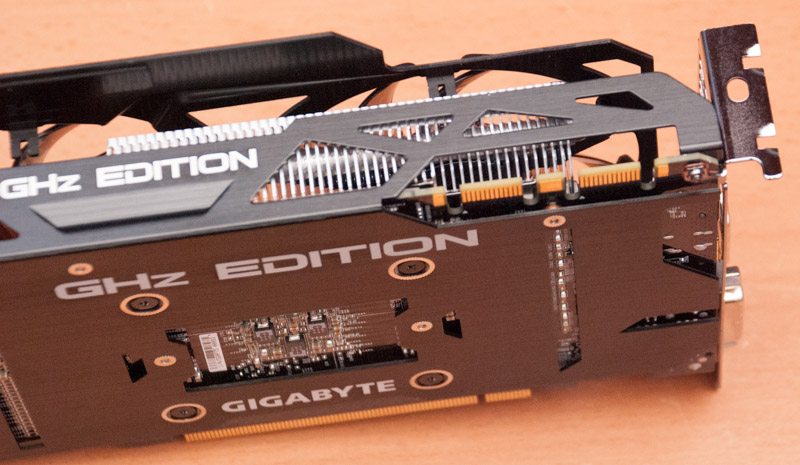
The bottom is an open-vented design to allow for the fans to expel air out into the chassis.

The rear I/O offers dual DVI, DisplayPort and HDMI. You can support a maximum of 4 displays, as either four separate displays, or three unified (aka on Nvidia Surround) with one accessory display.
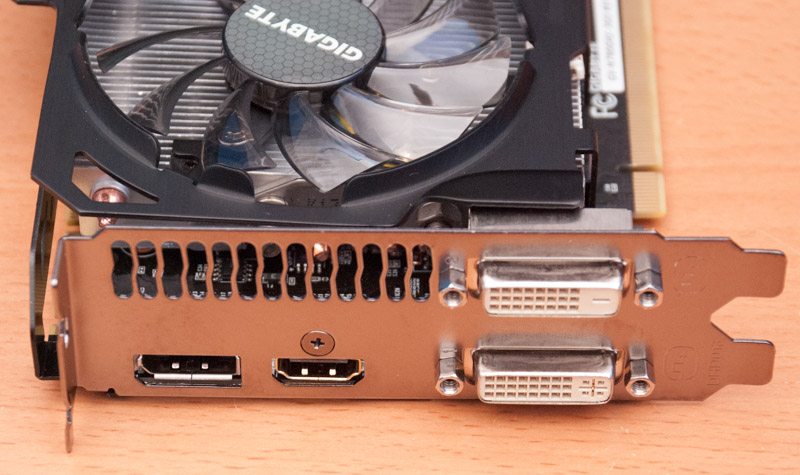
Testing Procedure
Methods
To test the performance of video cards at eTeknix we run a variety of tests at four different resolutions, where supported and appropriate, across a suite of games and benchmarks. We run each of these benchmarks three times to take an average and use the latest WHQL-certified video card drivers from AMD and Nvidia to test with – namely Catalyst 13.4 and Nvidia Forceware 320.49. For newer RX 2XX series graphics cards we have had to test with the 13.11 Beta to avoid compatibility issues.
To attain noise levels we hold a decibel meter approximately 3 inches away from the card after running Furmark for five minutes. To achieve idle noise we allow the system to stay idle at the desktop for 5 minutes before taking a noise reading.
To achieve temperatures we take the maximum temperature of the GPU core during Furmark load as recorded by CPUID HW Monitor. To achieve idle temperatures we take the minimum recorded GPU core temperature in CPUID HW Monitor after desktop-idling for 5 minutes. We then convert these temperatures into Delta temperatures – that is = actual recorded temperature minus the ambient temperature of the room.
To measure power consumption we take the maximum stable power consumption at idle on the desktop over a 5 minute period, and for load we take the maximum stable power consumption during Furmark load. Like with acoustic measurements we do not read off the maximum stable power consumption value until after 5 minutes to give the system enough time to stabilise at its power envelope.
Test System:
- Motherboard – Asus Rampage IV Extreme X79 LGA 2011 (chipset fan disabled)
- Processor – Intel Core i7 3960X at stock clock speeds of 3.3GHz with Turbo Mode disabled.
- RAM – 16GB (2 X 8GB) Corsair Vengeance Pro Series 1866MHz at 9-10-9-27
- CPU Cooler – Corsair H100i with Quiet Fan Profile
- Power Supply – Corsair HX1050W
- Main Storage Drive – Kingston HyperX 240GB SSD over SATA III interface
- Chassis – Lian Li T60 Test Bench
- Displays – Dell U2711 Ultra Sharp for 2560 by 1440 and we use the LG IPS 234 & LG IPS 224 with the Dell U2711 Ultra Sharp to run 5760 by 1080.
- Operating System – Windows 7 Ultimate 64 Bit
We would like to thank Asus, Corsair, Kingston, Lian Li and all our other partners who supplied us with test equipment and hardware. Their generosity makes our testing possible and without them we wouldn’t be able to produce the reviews we do, so thank you!
Games Used
- Aliens Vs Predator
- Dirt Showdown
- Hitman: Absolution
- Metro Last Light
- Sleeping Dogs
- Bioshock Infinite
- Tomb Raider
Resolutions Used (where possible)
- 1680 x 1050
- 1920 x 1080
- 2560 x 1440
- 5760 x 1080
Hardware Used
- Plug “killawatt” style electricty usage meter
- Benetech GM1351 decibel meter
Software Used
- 3DMark 11
- 3DMark 2013
- CPUID HWMonitor
- Unigine Heaven Benchmark 4.0
- Windows 7 Professional 64-bit
- Furmark 1.10.5
3DMark 11
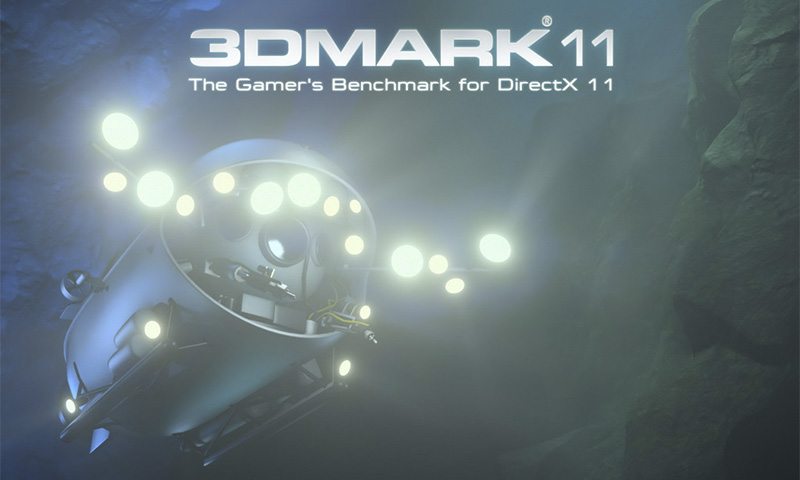
“3DMark 11 is the latest version of the world’s most popular benchmark. Designed to measure your PC’s gaming performance 3DMark 11 makes extensive use of all the new features in DirectX 11 including tessellation, compute shaders and multi-threading. Trusted by gamers worldwide to give accurate and unbiased results, 3DMark 11 is the best way to consistently and reliably test DirectX 11 under game-like loads.” From 3DMark.com
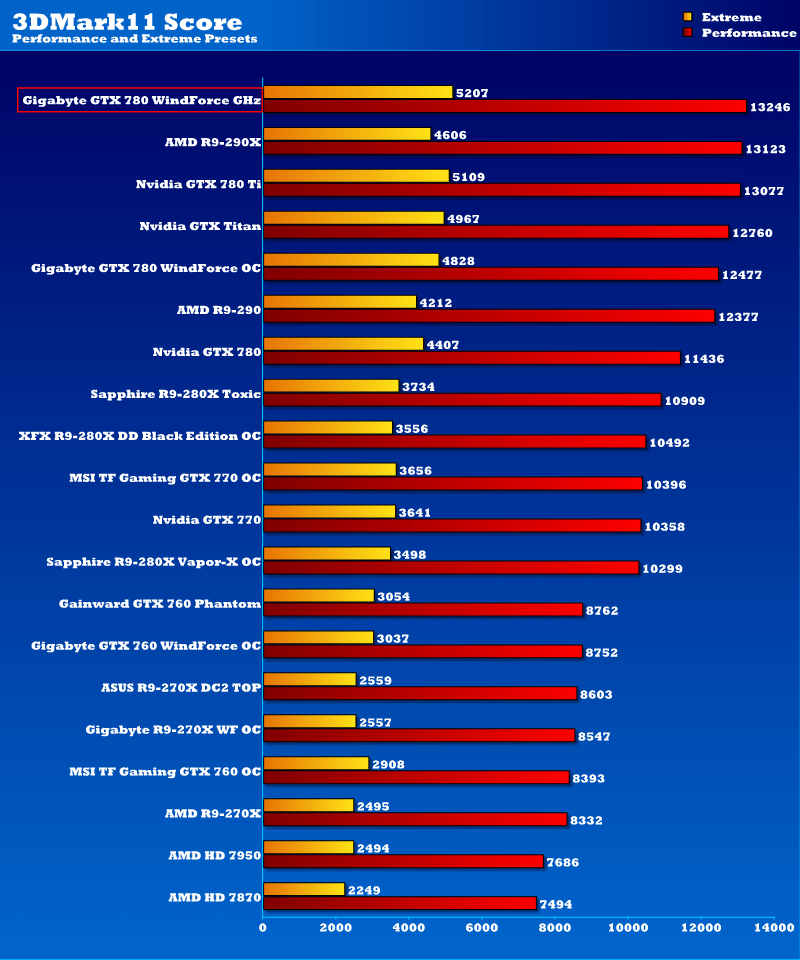
3DMark 2013
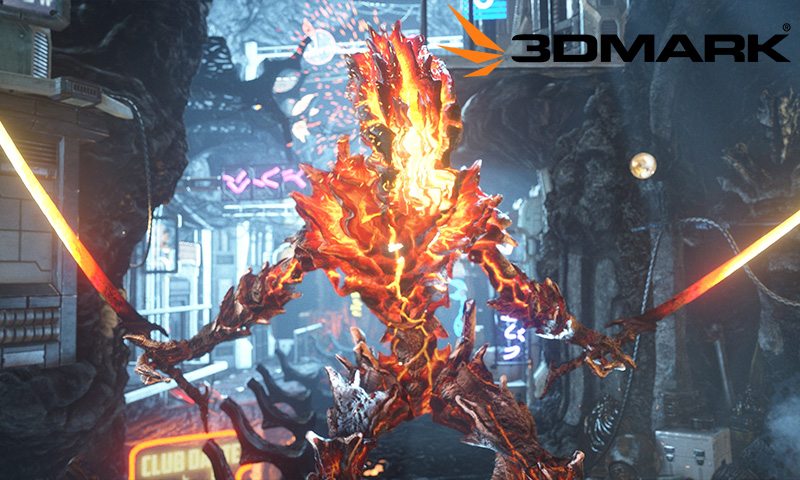
“The new 3DMark includes everything you need to benchmark your hardware. With three all new tests you can bench everything from smartphones and tablets, to notebooks and home PCs, to the latest high-end, multi-GPU gaming desktops. And it’s not just for Windows. With 3DMark you can compare your scores with Android and iOS devices too. It’s the most powerful and flexible 3DMark we’ve ever created.” From Futuremark.com
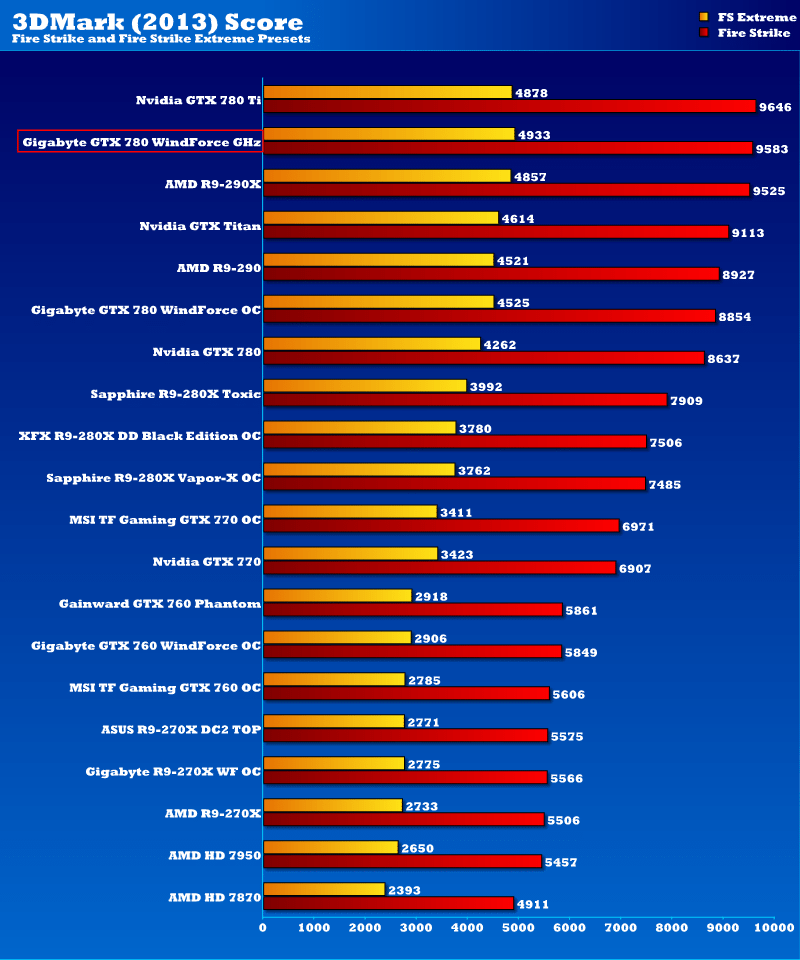
Unigine Heaven 4.0

“Heaven Benchmark with its current version 4.0 is a GPU-intensive benchmark that hammers graphics cards to the limits. This powerful tool can be effectively used to determine the stability of a GPU under extremely stressful conditions, as well as check the cooling system’s potential under maximum heat output. It provides completely unbiased results and generates true in-game rendering workloads across all platforms, such as Windows, Linux and Mac OS X.” From Unigine.com.
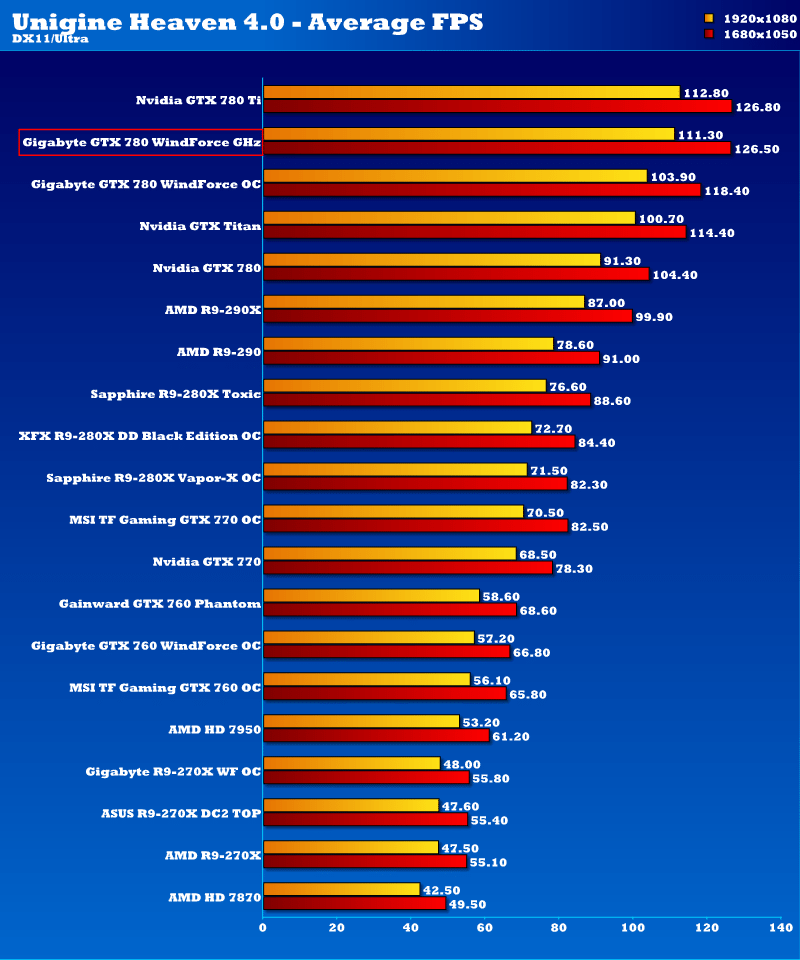
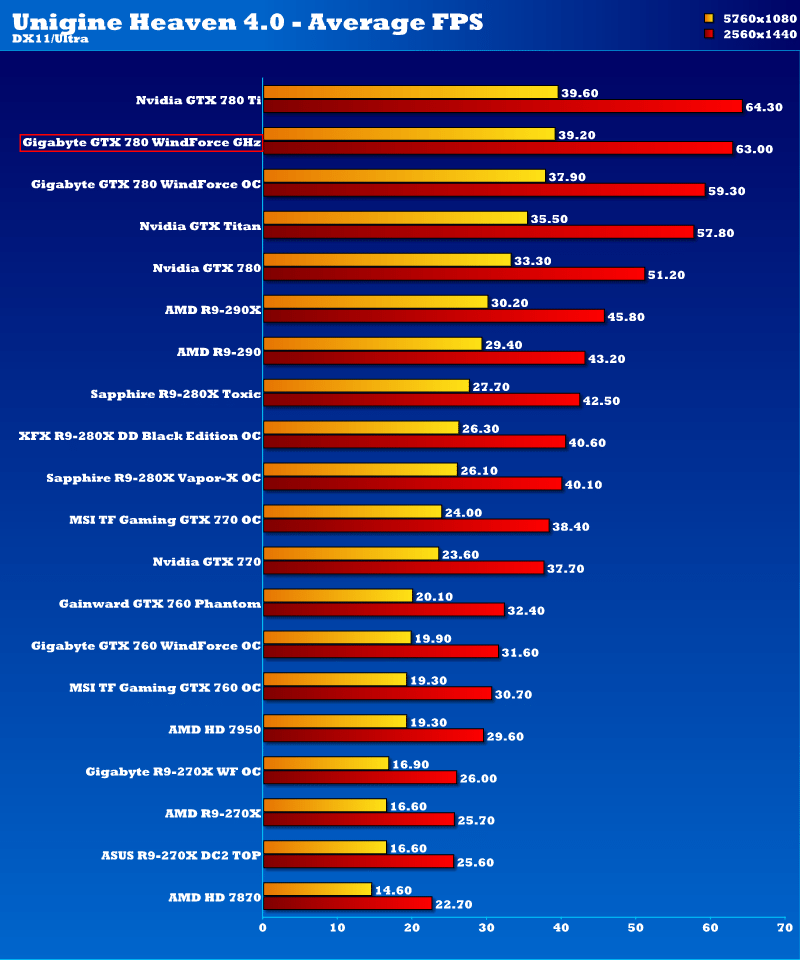
Aliens Vs. Predator

“Aliens vs. Predator, also known by fans as Aliens vs. Predator 3 or AVP3 to distinguish it from earlier titles, is a 2010 video game developed by Rebellion Developments and published by Sega for the PC, PlayStation 3 and Xbox 360. It is a sequel to Aliens versus Predator 2, although it does not have any connection with that game’s plot. Instead it charts events on the planet BG-386, where a Weyland-Yutaniresearch team led by Karl Bishop Weyland has discovered aYautja Pyramid, and is simultaneously studying the Xenomorphs found there and hoping to unlock the advanced technology contained within. The Aliens soon escape, prompting a response from the United States Colonial Marine Corps, while the Predators also send three of their member to investigate.” From Avp.wikia.com
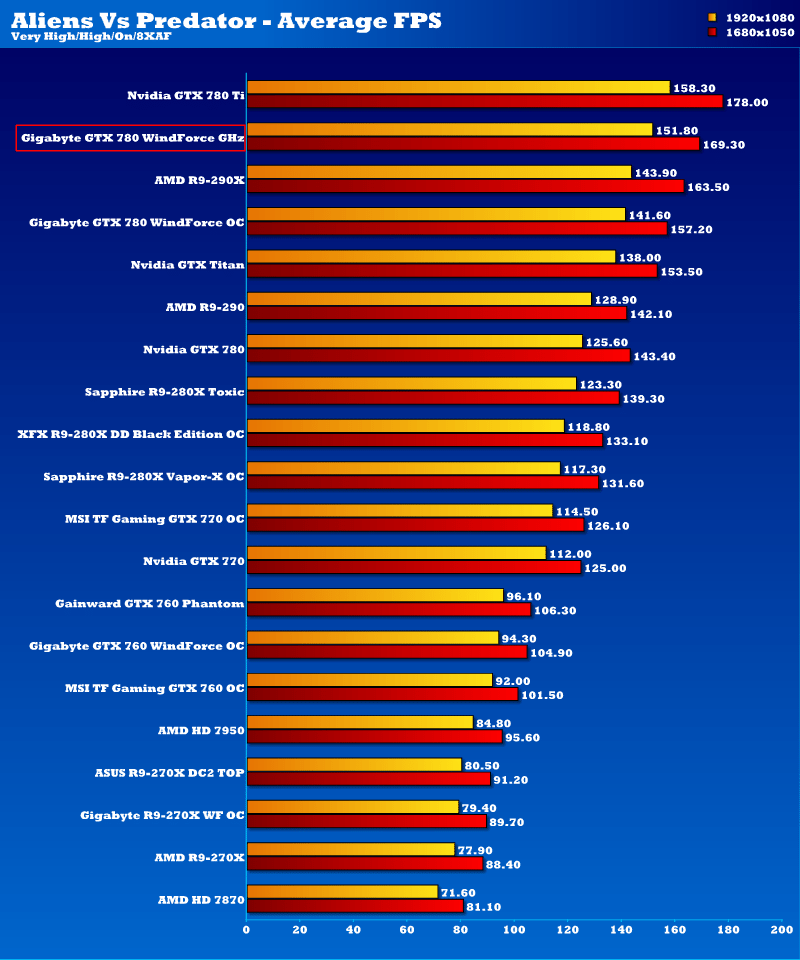
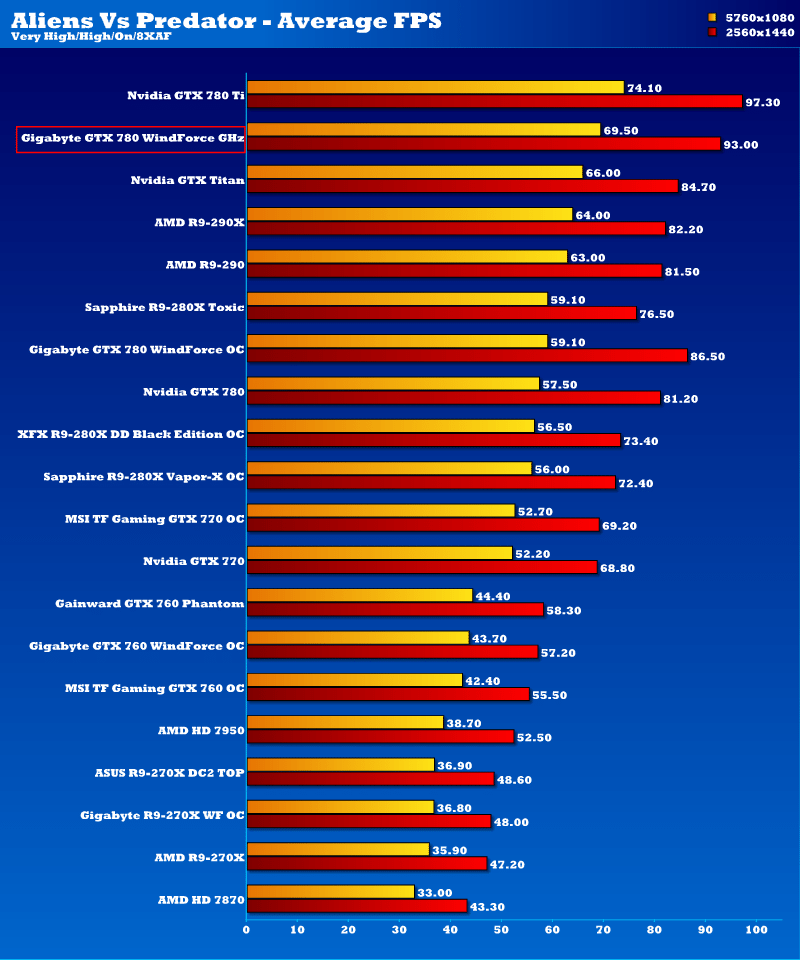
Bioshock Infinite

“BioShock Infinite is a first-person shooter like you’ve never seen. Just ask the judges from E3 2011, where the Irrational Games title won over 85 editorial awards, including the Game Critics Awards’ Best of Show. Set in 1912, players assume the role of former Pinkerton agent Booker DeWitt, sent to the flying city of Columbia on a rescue mission. His target? Elizabeth, imprisoned since childhood. During their daring escape, Booker and Elizabeth form a powerful bond — one that lets Booker augment his own abilities with her world-altering control over the environment. Together, they fight from high-speed Sky-Lines, in the streets and houses of Columbia, on giant zeppelins, and in the clouds, all while learning to harness an expanding arsenal of weapons and abilities, and immersing players in a story that is not only steeped in profound thrills and surprises, but also invests its characters with what Game Informer called “An amazing experience from beginning to end.” From Bioshockinfinite.com
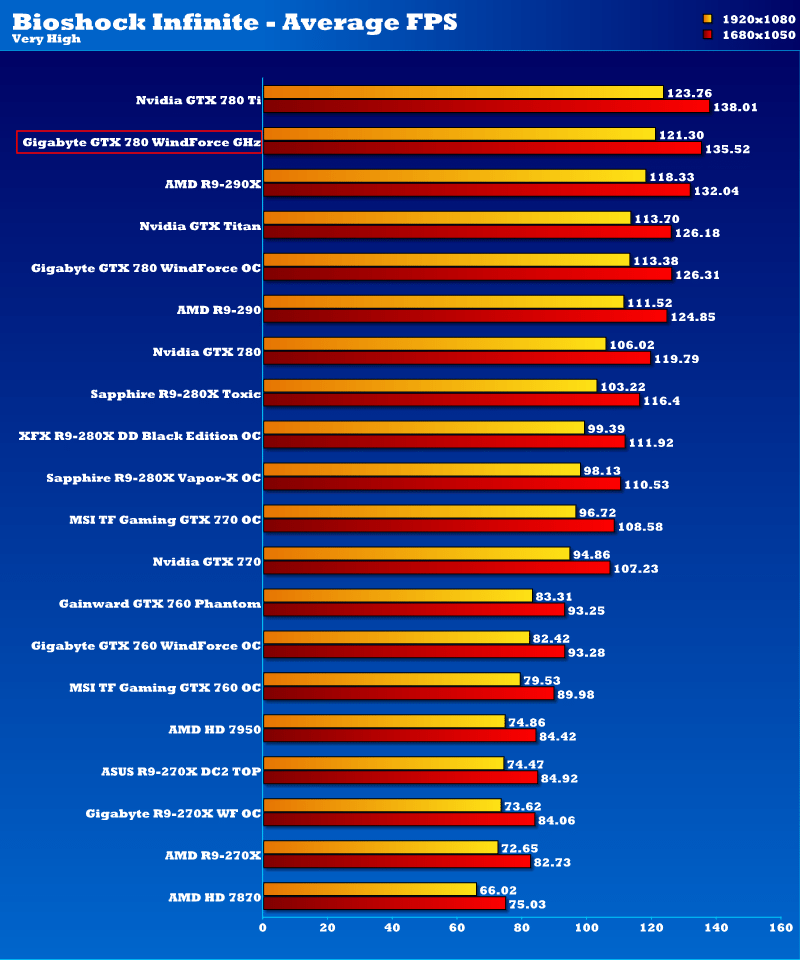
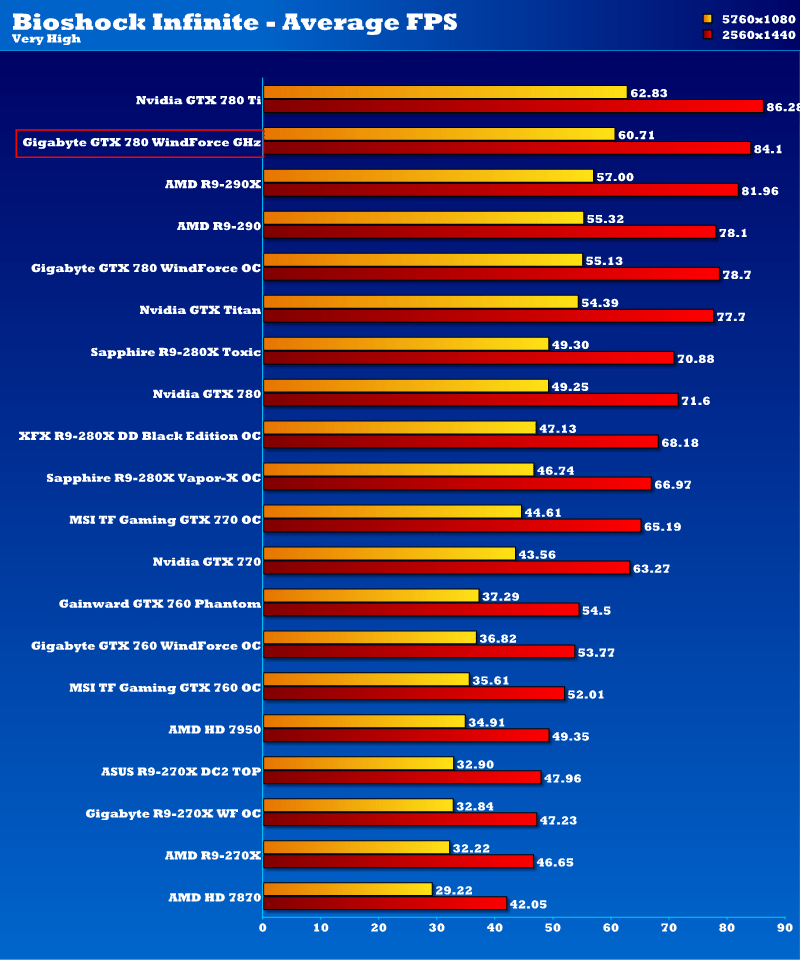
Dirt Showdown

“DiRT Showdown is the new arcade racing game from the team that brought you the award-winning DiRT series, uncaged in 2012. Pick up and play controls combine with electrifying events, frenzied crowds and stunning graphics to deliver high octane, dive in and drive thrills from event one.” From Codemasters.com
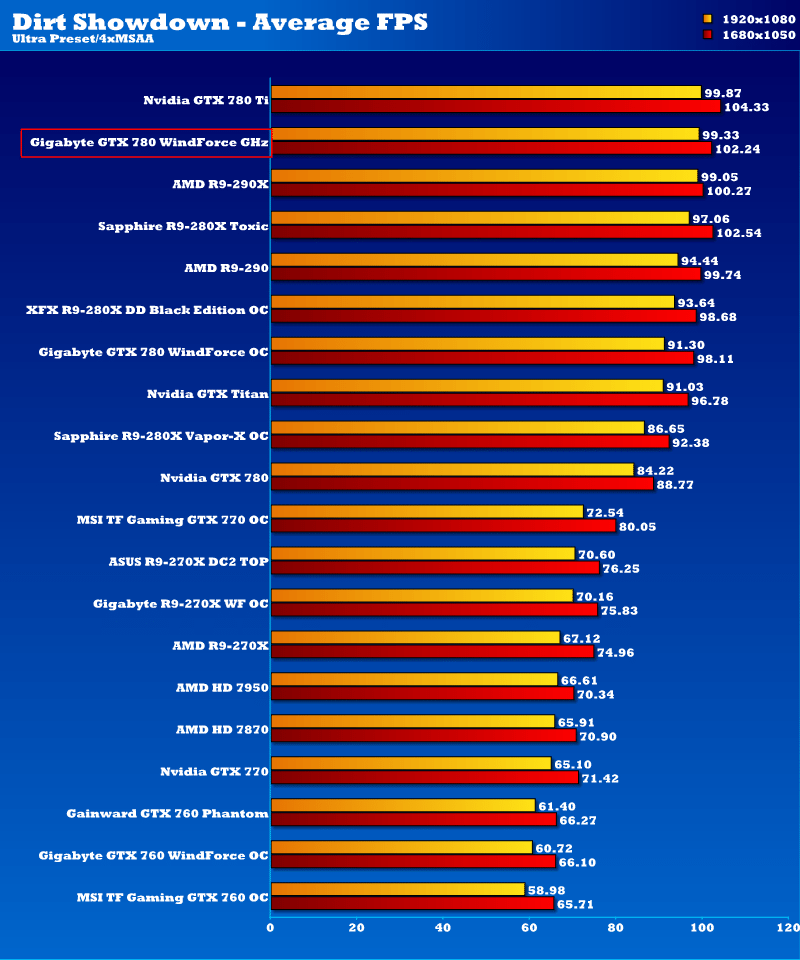
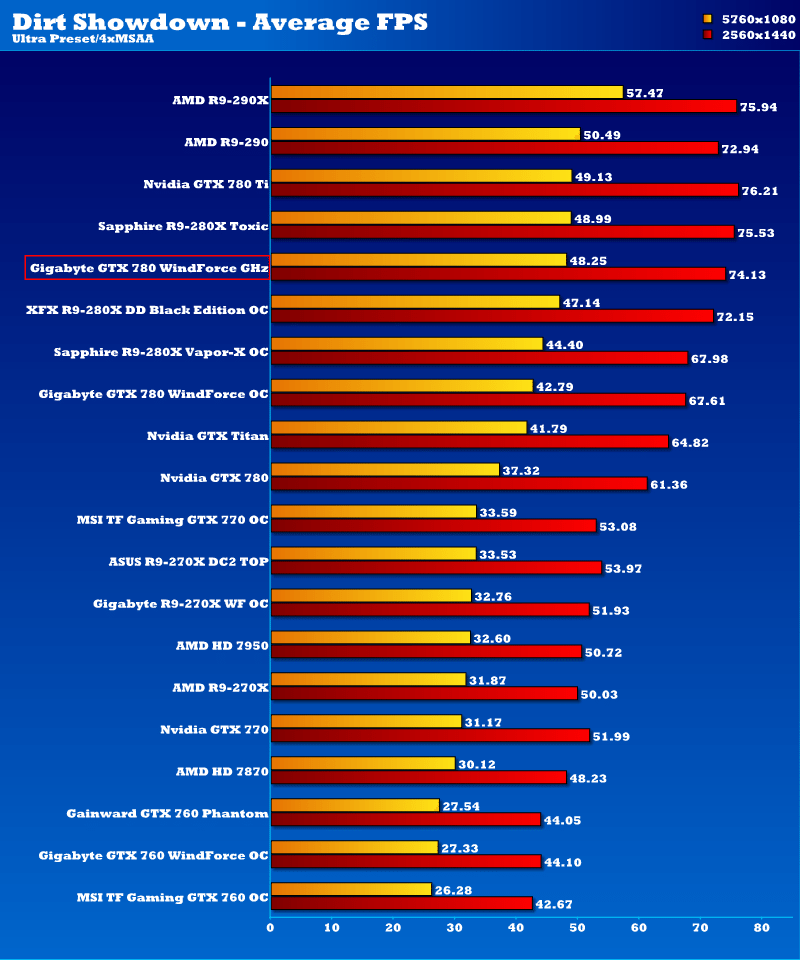
Hitman Absolution
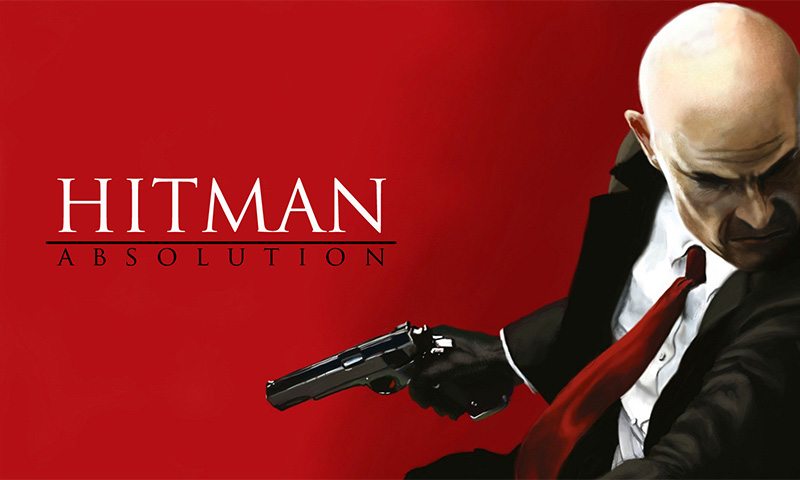
“Hitman: Absolution is the fifth title in the Hitman series by producer, IO Interactive, published by Square Enix and co-published by Eidos. The game was released for thePlayStation 3, Xbox 360 and Microsoft Windows on November 20, 2012. Hitman: Absolution runs on IO Interactive’s proprietary Glacier 2 game engine, combining classic Hitman game mechanics with new mechanics.” From hitman.wikia.com
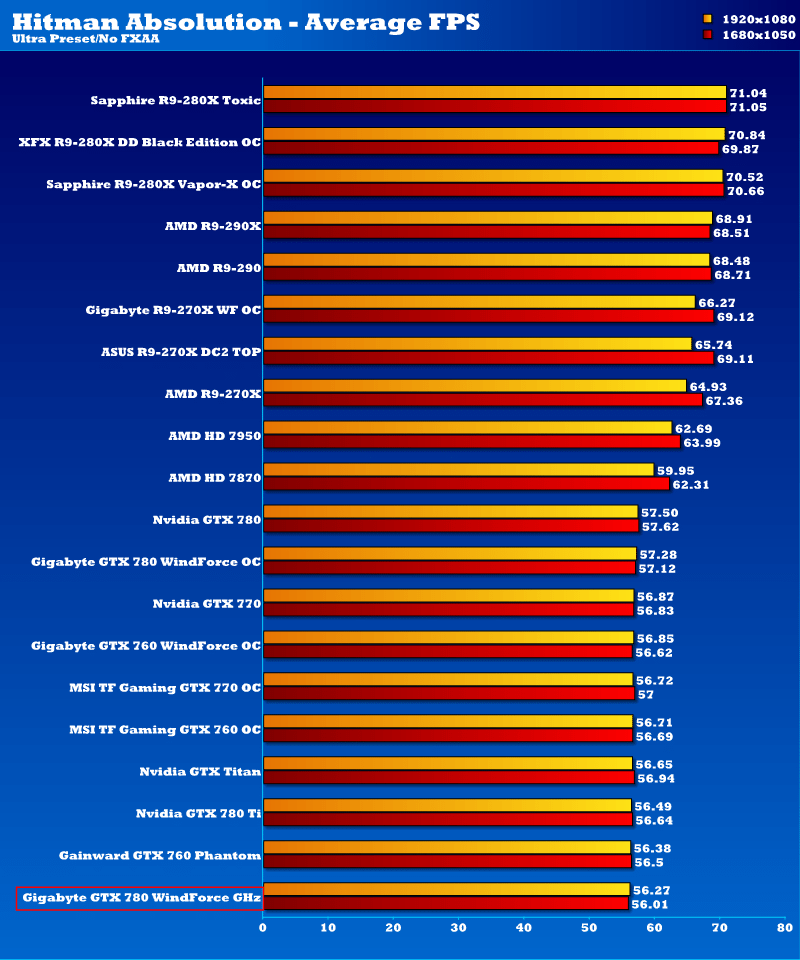
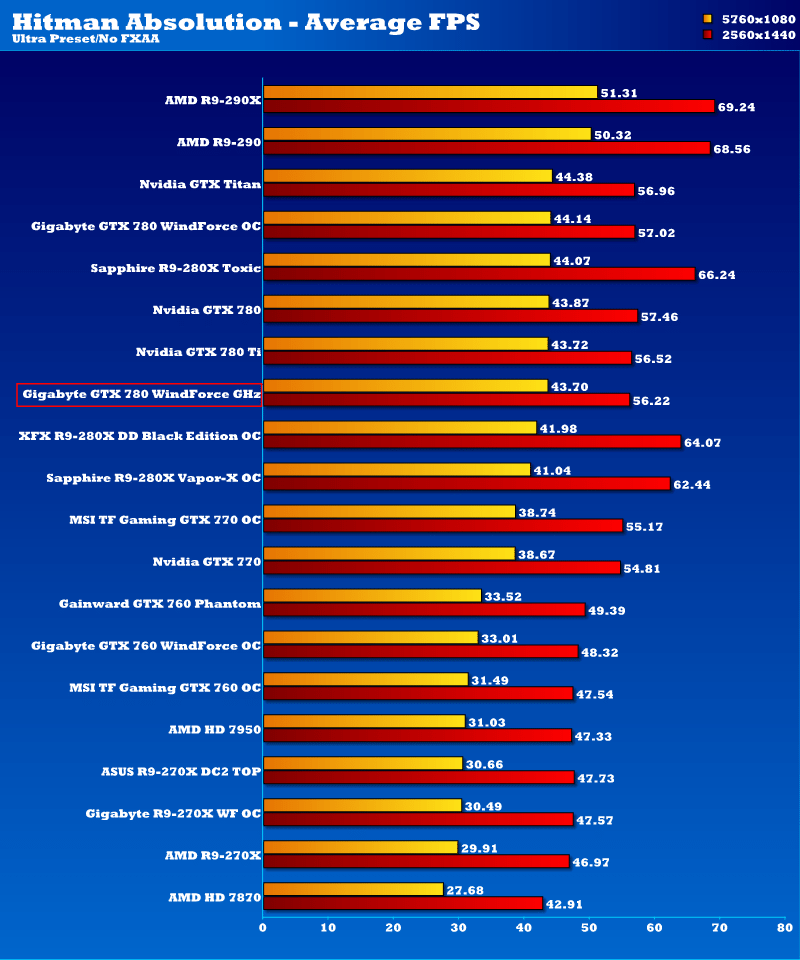
Metro Last Light
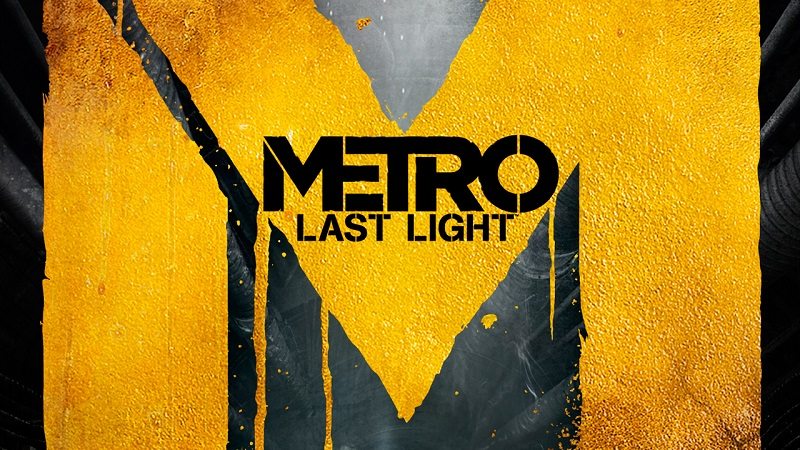
“Metro: Last Light (formerly Metro 2034) is a first-person shooter and horror video game developed by Ukrainian studio 4A Games and published by Deep Silver for Microsoft Windows, PlayStation 3 and Xbox 360. It was released in May 2013. The game is set in a post-apocalyptic world and features a mixture of action-oriented and stealth gameplay. The game exists in the universe of the novel, Metro 2033, and its sequels, written by Russian author, Dmitry Glukhovsky, but does not follow any direct storylines from the books. Metro:Last Light takes place one year after the events of Metro 2033, proceeding from the canonical ending from the novel, ending where Artyom chose to call down the missile strike on the Dark Ones.Metro: Last Light features technology which boasts of lighting effects and improved physics claimed to set a new graphical benchmark on the PC and consoles.” From Wikipedia.org
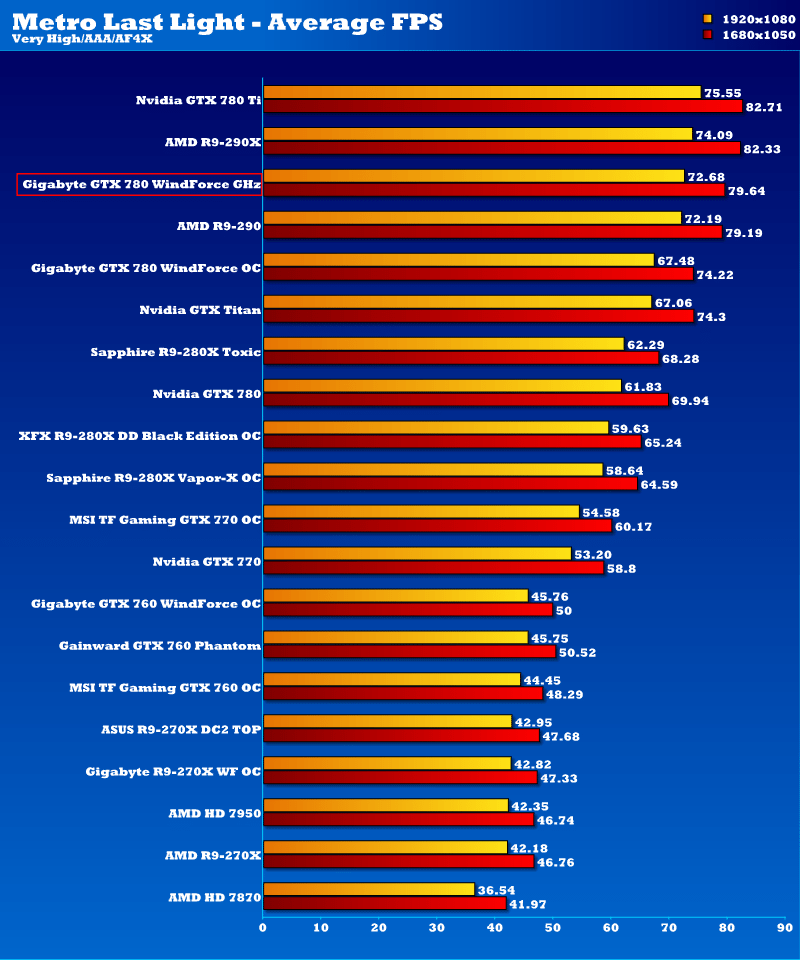
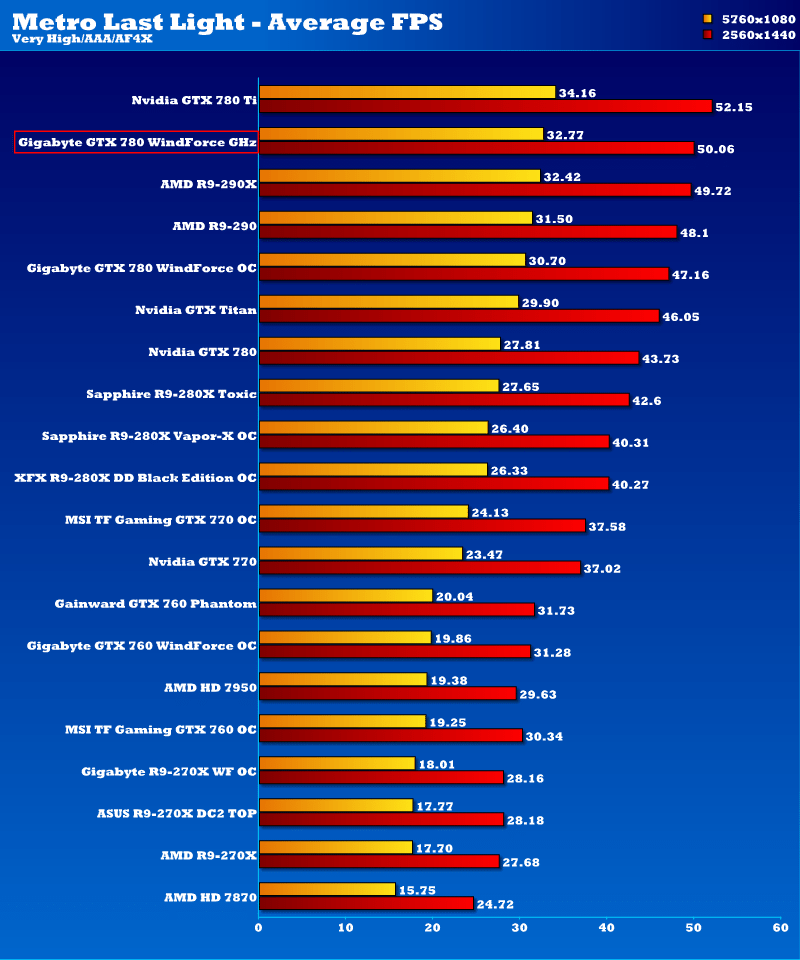
Sleeping Dogs

“Welcome to Hong Kong, a vibrant neon city teeming with life, whose exotic locations and busy streets hide one of the most powerful and dangerous criminal organizations in the world: the Triads. In this open world game, you play the role of Wei Shen, an undercover cop trying to take down the Triads from the inside out. You’ll have to prove yourself worthy as you fight your way up the organization, taking part in brutal criminal activities without blowing your cover. Torn between your loyalty to the badge and a criminal code of honor, you will risk everything as the lines between truth, loyalty and justice become permanently blurred.” From Sleepingdogs.net
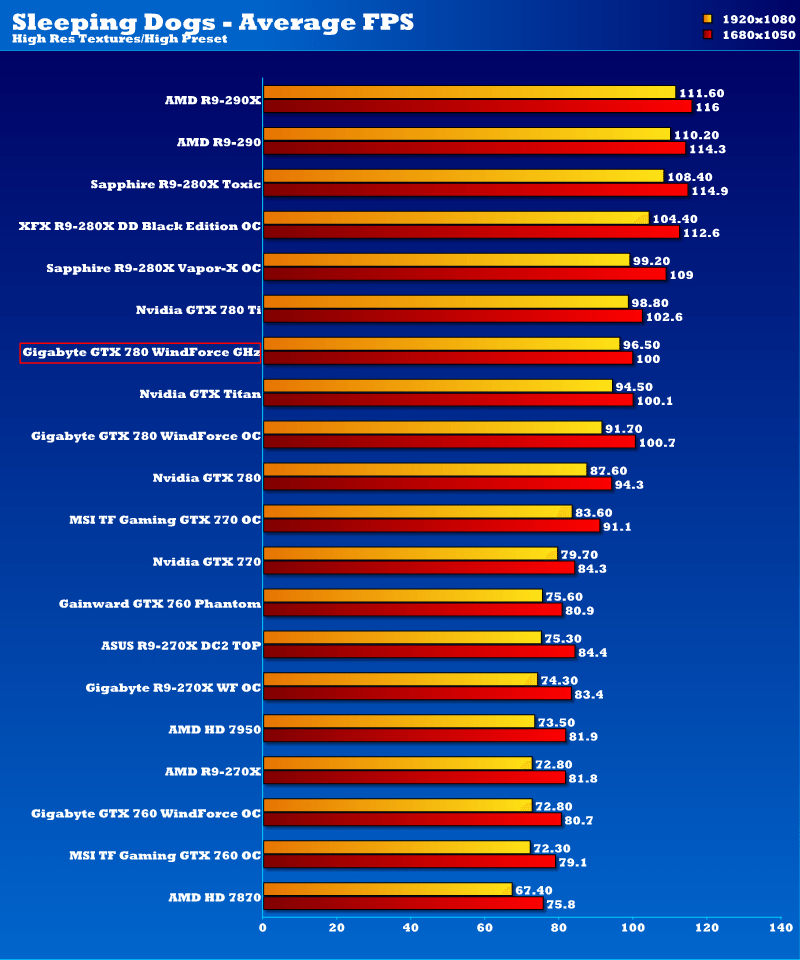
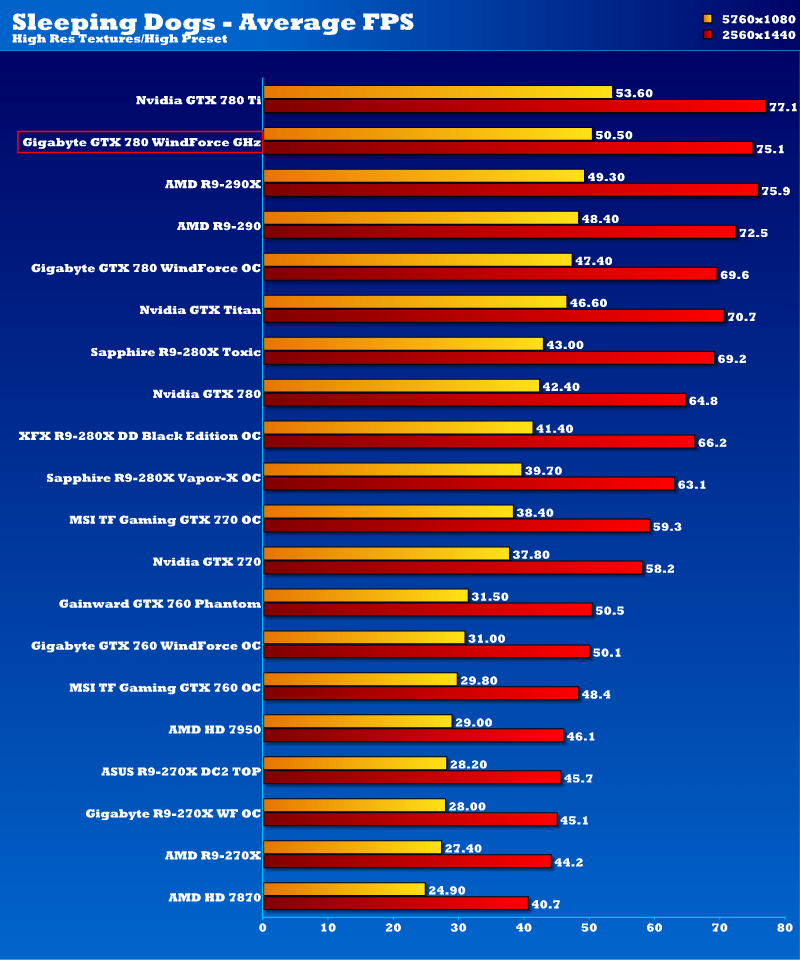
Tomb Raider

“On 5 March 2013, Square Enix released Tomb Raider, billed as a reboot of the franchise. In Tomb Raider, the player is confronted with a much younger Lara Croft who is shipwrecked and finds herself stranded on a mysterious island rife with danger, both natural and human. In contrast to the earlier games Croft is portrayed as vulnerable, acting out of necessity, desperation and sheer survival rather than for a greater cause or personal gain.” From Wikipedia.org
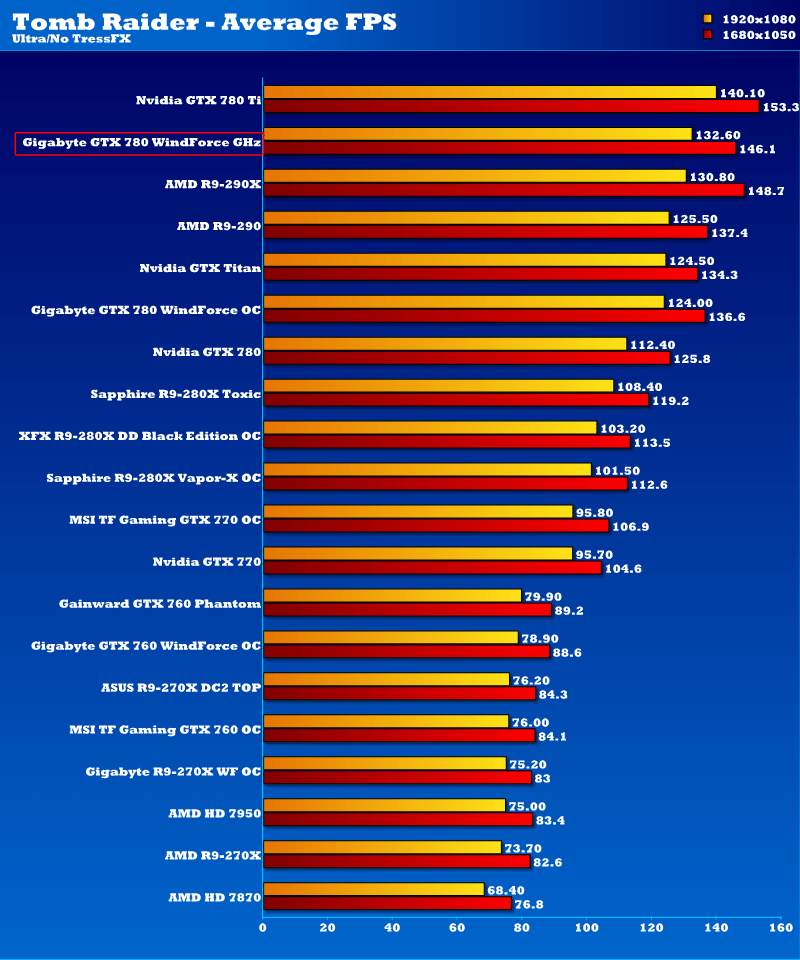
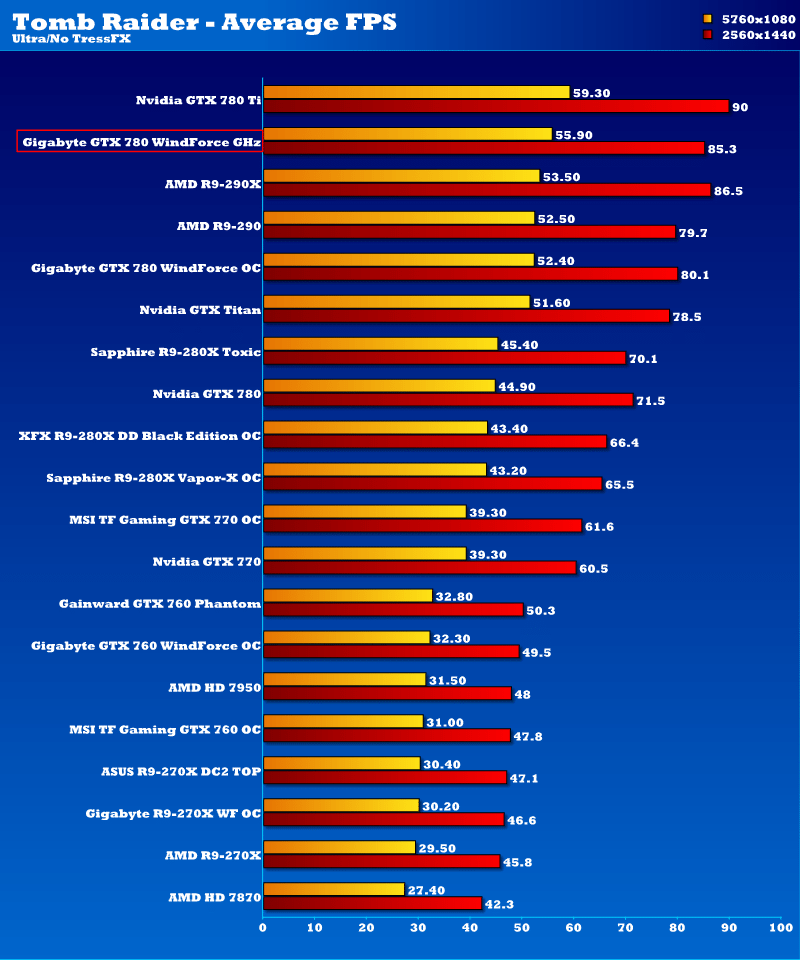
Acoustics
The acoustic performance of a graphics card is an increasingly important consideration for PC users and Gamers these days. While fan noise is unlikely to ruin the gaming experience, no one likes a noisy graphics card and no one will argue with the fact that quieter is better. Many users are willing to sacrifice temperatures to gain a noise advantage, but with better cooling solutions being developed it is increasingly common to be able to get both better cooling and better acoustic performance than a reference solution on most custom cooled graphics cards from Nvidia and AMD partners. That said both AMD and Nvidia have stepped up their game too with regards to acoustics on their reference coolers. Ultimately, acoustics will always be a big deciding factor when there is often very little differentiation between graphics cards using the same GPUs.
Find details of our acoustic methodology on page 3.
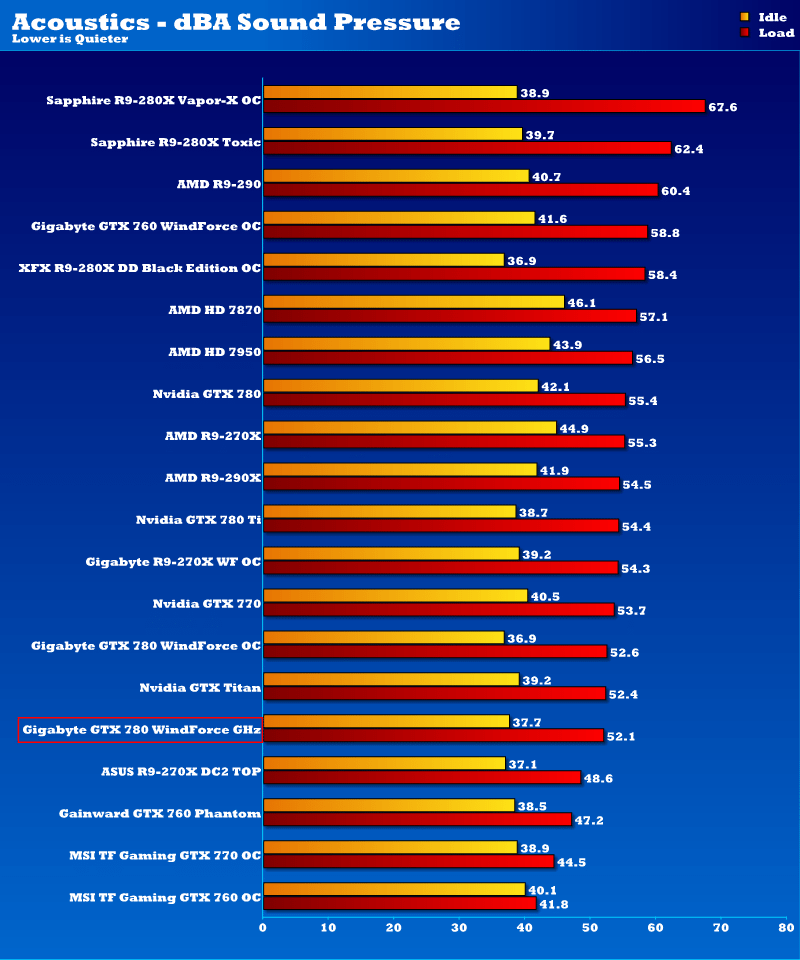
Power Consumption
With electricity becoming increasingly expensive across most parts of the world the need for computer components to become power efficient has never been more relevant. Graphics cards are often the most power hungry components inside a system so having an efficient graphics card is very important to keeping power bills under control. Power is often correlated to heat and so lower power consumption means a graphics card is likely to run slightly cooler and put out less heat into your system meaning your other components will run cooler with improved longevity. AMD and Nvidia have also both made power consumption an integral part of the way graphics cards dynamically overclock so the need for graphics card vendors to use efficient VRM and PCB designs is becoming important to maximise performance.
Find details of our power consumption methodology on page 3.
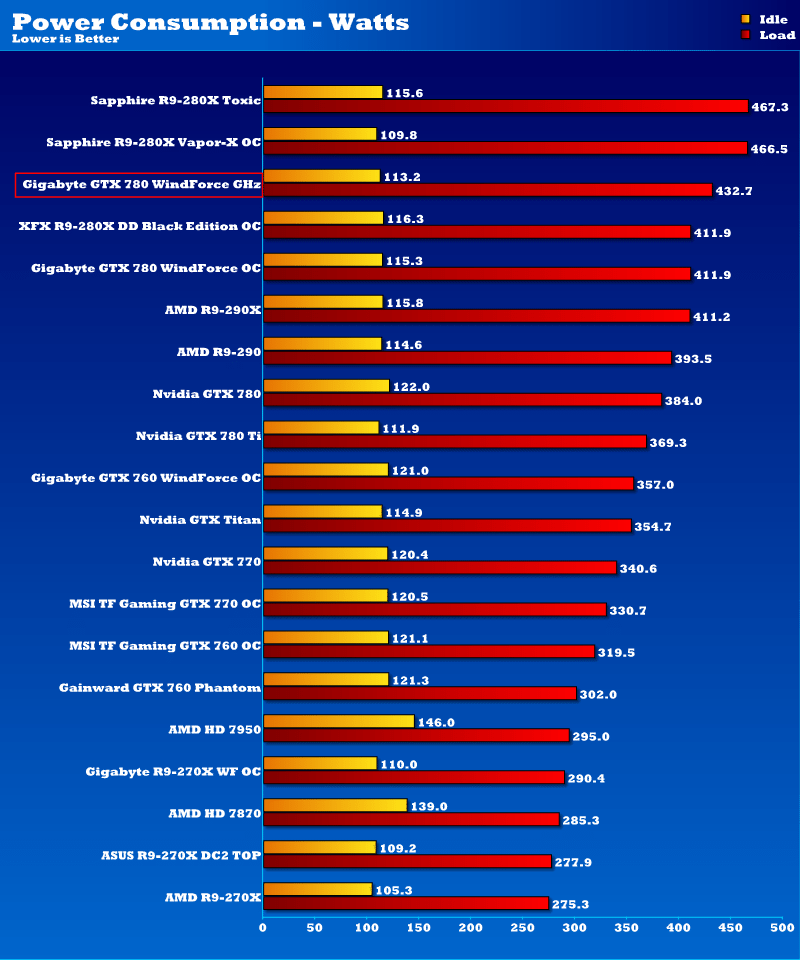
Temperatures
The cooling solution which graphics card vendors use is one of the main differences that consumers have to contend with. Apart from their acoustic properties, the thermal properties of graphics card coolers are extremely important. Lower temperatures are always better and with AMD and Nvidia opting to use dynamic overclocking algorithms that take temperature into account it is important that graphics card vendors use high performance cooling solutions in order to maximise performance. The era of graphics cards reaching dangerous temperatures are now in the past but the importance of lower temperatures still remains. Lower temperatures mean better stability, longer component longevity and lower fan speeds. That said temperatures are one of the most important non-performance related properties on a graphics card.
Find details of our temperature methodology on page 3.
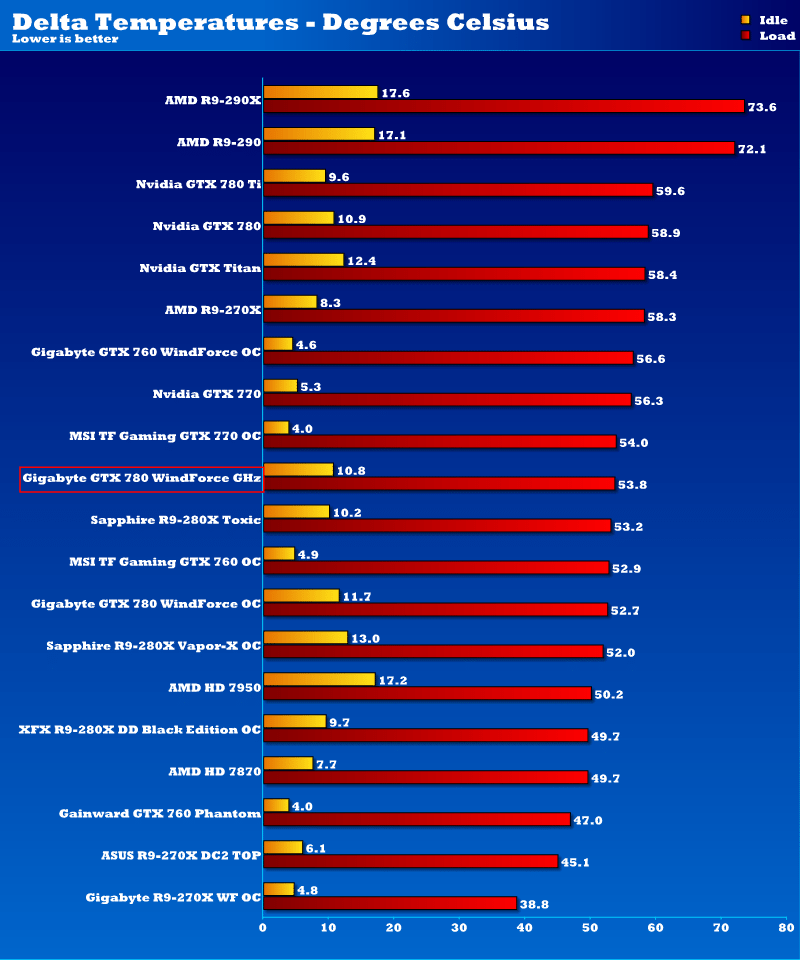
Overclocking
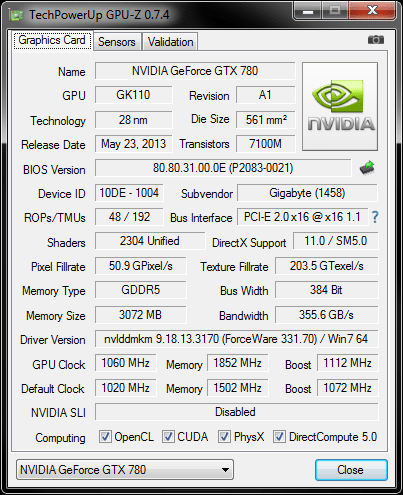
Given how much the Gigabyte GTX 780 GHz Edition already comes overclocked out of the box it was surprising we could even overclock it further at all. In fact 980-1050MHz seems to be the zone at which most GTX 780’s stop overclocking any further. Unsurprisingly ours was pretty similar and could only manage an additional 40MHz stable on the core but an additional 350MHz actual (1.4GHz effective) on the memory was possible which is impressive. Overvolting was supported but only an additional 60mv, aka 0.06v, and that didn’t allow us to go any higher.
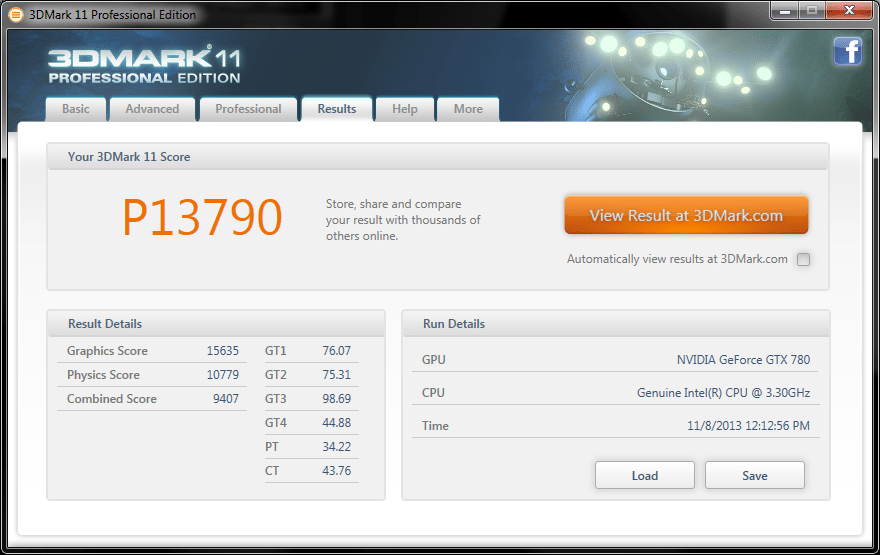
When Overclocked the GTX 780 GHz Edition is essentially on par with an overclocked R9 290 that isn’t being throttled by poor cooling. Of course non-reference versions of the R9 290 aren’t available right now so the GTX 780 GHz Edition still looks like an attractive option. If you absolutely have to stay Nvidia, for whatever reason, then the GTX 780 GHz Edition from Gigabyte is most definitely a better value option than a GTX 780 Ti or GTX Titan and is worth considering. Of course you could buy a “normal” GTX 780 for less money and overclock it yourself, but there’s no guarantee it will even reach the factory speeds the Gigabyte GTX 780 GHz Edition ships with.
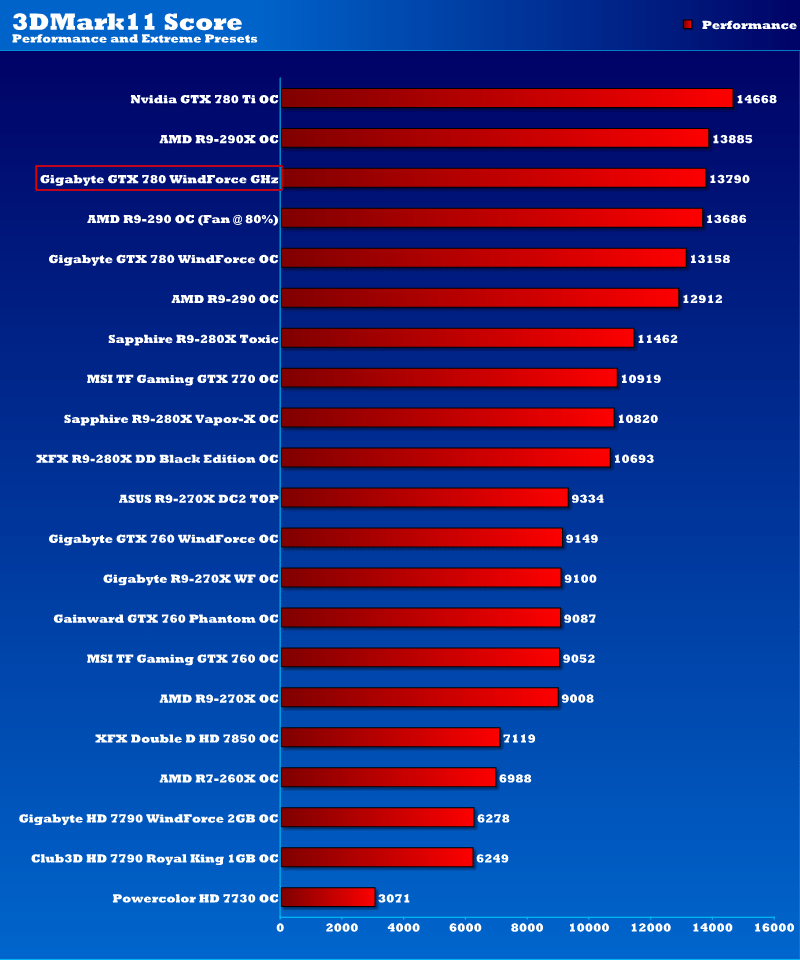
Final Thoughts
Pricing
In the UK the Gigabyte GTX 780 GHz Edition is currently an Overclockers UK exclusive and is being sold by them for £439.99 (though it is on offer for this week only for £419.99, so that is a bargain if you can grab it quick!). By my rough estimates that is about 11% over the baseline UK starting price of £394.99 for the GTX 780. In the USA a normal GTX 780 fetches $499 while this model sells for around $530-550. For reference the GTX Titan costs from $999/£799, the GTX 780 Ti from $699/£559 and the GTX 770 from $320/£250. On the AMD side the R9 290X costs from $549/£439, the R9 290 costs from $399/£319 and the R9 280X costs from $300/£230.
Overview
Gigabyte’s GTX 780 GHz Edition is a super impressive performing video card. We can only assume it is based off a new(er) stepping of the GTX 780 GPU because for its high clock speed the power consumption was tame and for the clock speed it seemed to be clock-per-clock faster than older GTX 780s we tested even on the same driver packages. Gigabyte’s GTX 780 GHz Edition is an absolute monster of a graphics card: it is a GTX Titan killer and it manages to match the R9 290X as well as come close to the GTX 780 Ti. Of course when non-reference R9 290Xs arrive that will be a different story but at this point in time, if you’re looking to go Nvidia, I see no reason to even consider spending more on a GTX 780 Ti or GTX Titan when the Gigabyte GTX 780 GHz Edition has all the performance you need at a comparatively attractive price point.
If we set performance aside the graphics card is equally as impressive. Gigabyte’s WindForce cooling solution is highly effective, allowing you to constantly achieve and maintain the maximum core frequency (and resultantly maximum performance) all the time, even in extended gaming sessions. The noise was lower than a stock GTX 780, and so were the temperatures, which is impressive given the clock speed is a staggering 20% higher than a reference GTX 780. The WindForce cooling solution also looks really nice, unlike some previous revisions that had a slightly dubious looking glossy plastic shroud or a blue PCB. We also think the backplate is a lovely addition which sets the whole design off with some finesse and gives the card some improved structural rigidity.
What is there to say in the way of negatives? Well I think the obvious point is that “all Gigabyte have done” is taken their GTX 780 WindForce OC graphics card, overclocked it a bit, and then added on a backplate. This modification adds about 10% to the overall cost. The prudent buyer might say, I could surely just buy a normal non-reference GTX 780 and overclock it myself, plus I don’t really need a backplate. Indeed you could do that and it would save you money. However, you have to consider not all GTX 780s will even reach that speed and as far as we know they aren’t all designed to. The reason this one is so capable is because it could be based on a new stepping of the GTX 780, though I can’t be 100% sure if that’s the case as our GPU-Z stated A1 stepping (which is the older stepping) not B1 stepping (the supposed newer one). If it isn’t based on a new stepping then it is at least based on cherry picked speed-binned GTX 780s. In essence this is what you’re paying for, the best GTX 780s Gigabyte can find and a backplate. Much like how you’d pay more for an ASUS Direct CU II TOP or EVGA Superclocked graphics card versus the “normal” equivalents – this is on a similar level, except Gigabyte have pushed those clock speeds even further than anyone else has.
An additional negative to consider again draws on the question of overclocking. Since the card is already pushed close to the limits of what a GTX 780 can do, you’ll find that overclocking headroom is relatively small. We managed 40MHz, with some voltage tuning maybe 55MHz might of been possible but even so that’s a tiny amount – only 5%. A final point to note is power consumption is going to be comparatively high to a GTX 780 Ti or GTX Titan. Undoubtedly this is to be expected because overclocking always reduces the performance-per-watt efficiency of a GPU. The general rule of thumb, for Nvidia cards, is that more CUDA cores of the same architecture at a lower clock speed will give lower power consumption than less CUDA cores at higher clock speeds – this is because power efficiency declines with clock speed. However, you save so much money in buying the card compared to a GTX Titan or GTX 780 Ti, that lost power efficiency is a small price to pay.
Pros
- Performs almost as well as the GTX 780 Ti
- Runs constantly below the GPU Boost 2.0 threshold even when overclocked further
- Great thermal and acoustic performance of the WindForce cooling solution
- Comes with a backplate
- Memory overclocks very well
Cons
- 3 year warranty may not be seen as enough by many
- Relatively high power consumption vs the GTX 780 Ti or GTX Titan
- Limited core overclocking headroom
“What Gigabyte have done with their GTX 780 GHz Edition is impressive. They’ve taken a stock GTX 780, given it a massive 20% overclock, then added their highly effective WindForce cooling solution. To make it that little bit more special they’ve also thrown a backplate into the equation and all of this costs you just 10% more than a “normal” GTX 780. While additional overclocking headroom is not that impressive, it doesn’t need to be because the GTX 780 GHz Edition from Gigabyte essentially guarantees you a capable GTX 780 overclocker as it has to run at a 20% overclock out of the box. If you’re looking for a viable alternative to the GTX 780 Ti or GTX Titan, then we think this just might be it, and for a much smaller price. Well done Gigabyte!”
Thank you to Gigabyte for providing this review sample.




















